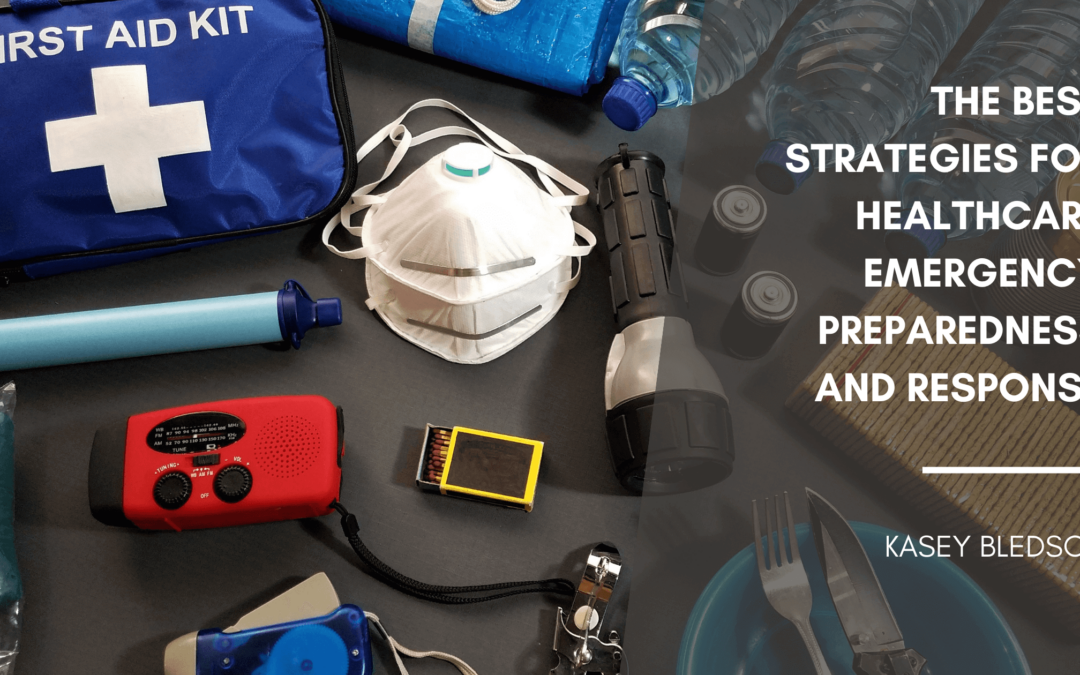In the face of unforeseen emergencies and disasters, the healthcare industry plays a pivotal role in safeguarding communities and saving lives. Effective emergency preparedness and response are crucial for healthcare facilities, whether a natural disaster, disease outbreak, or mass casualty event. By implementing well-defined strategies, healthcare organizations can enhance their ability to handle emergencies efficiently and minimize the impact on patients and staff. Here are some of the best strategies for healthcare emergency preparedness and response.
Develop Comprehensive Emergency Plans:
Developing comprehensive emergency plans is the foundation of any successful emergency preparedness strategy. These plans should cover a range of scenarios, considering both internal emergencies (such as power outages or equipment failures) and external events (such as hurricanes or pandemics). Collaborate with key stakeholders, including healthcare professionals, administrators, and local authorities, to identify potential risks and develop detailed protocols for each scenario. Regularly review and update these plans to reflect changing circumstances and incorporate lessons learned from previous emergencies.
Establish Clear Communication Channels:
During emergencies, effective communication is vital for coordination and timely response. Establishing clear communication channels both within the healthcare facility and with external stakeholders is crucial. To ensure rapid and reliable communication:
- Utilize a combination of technologies, such as mobile alerts, two-way radios, and secure messaging platforms.
- Designate communication liaisons responsible for disseminating information to staff, patients, families, and the public.
- Conduct regular drills and training exercises to test the communication systems and identify potential gaps.
Conduct Regular Staff Training and Drills:
Well-trained staff can make a significant difference in emergency response. Provide regular training sessions on emergency protocols, including evacuation procedures, triage, and infection control measures. Simulated drills and exercises help identify areas for improvement and familiarize the staff with their roles during emergencies. Encourage interdisciplinary collaboration and cross-training to ensure a flexible workforce that can adapt to different situations. Training should encompass both clinical and non-clinical staff to maintain a comprehensive approach.
Maintain Robust Supply Chains:
A well-functioning healthcare facility relies on a consistent supply of essential medications, equipment, and resources. Develop a resilient supply chain management system that anticipates potential disruptions and ensures the availability of critical supplies during emergencies. Regularly review inventory levels, establish relationships with multiple suppliers, and consider stockpiling essential items when appropriate. Collaborate with local, regional, and national organizations to leverage shared resources and support mutual aid during emergencies.
Foster Community Partnerships:
Effective emergency response extends beyond the boundaries of healthcare facilities. Building strong partnerships with local emergency management agencies, first responders, public health departments, and community organizations is essential. Collaborate in planning and preparedness activities, share information, and establish mutual aid agreements. Engage with community members through educational campaigns, workshops, and drills to enhance public awareness and readiness. These partnerships will foster a coordinated response and ensure seamless integration of resources during emergencies.
Utilize Technology and Data:
Leveraging technology and data can significantly enhance emergency preparedness and response. Implement electronic health record systems and other digital tools to maintain accurate and accessible patient information during emergencies. Utilize data analytics to monitor disease outbreaks, identify patterns, and allocate resources effectively. Telemedicine and remote monitoring technologies can be invaluable in delivering patient care during emergencies, reducing the burden on healthcare facilities.
Conclusion:
Healthcare emergency preparedness and response require a proactive and multi-faceted approach. By developing comprehensive emergency plans, establishing clear communication channels, conducting regular staff training, maintaining robust supply chains, fostering community partnerships, and utilizing technology and data, healthcare organizations can strengthen their ability to handle emergencies effectively. Continuous evaluation, improvement, and collaboration with stakeholders are vital to staying resilient and ensuring the safety of patients, staff, and communities in the face of unexpected challenges.

